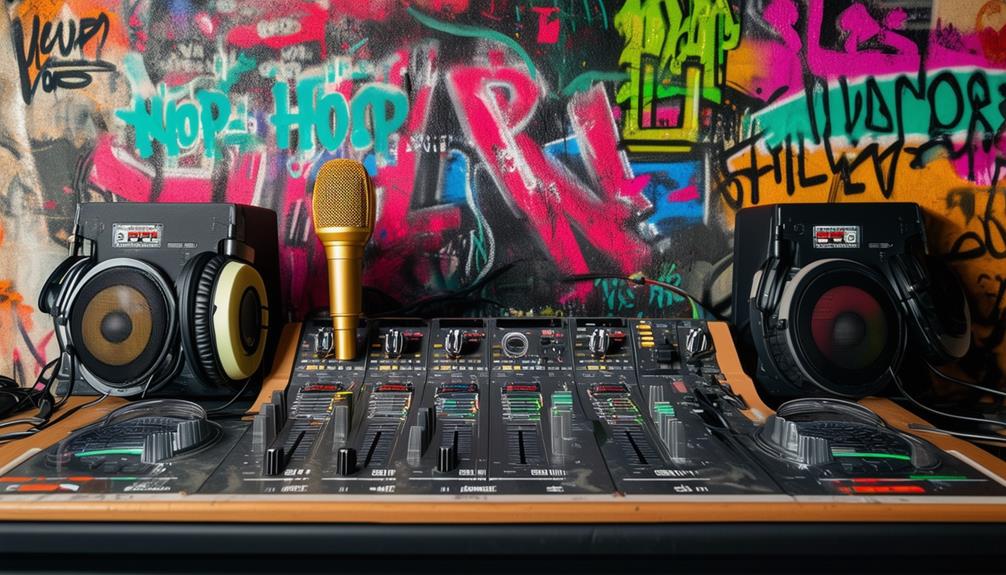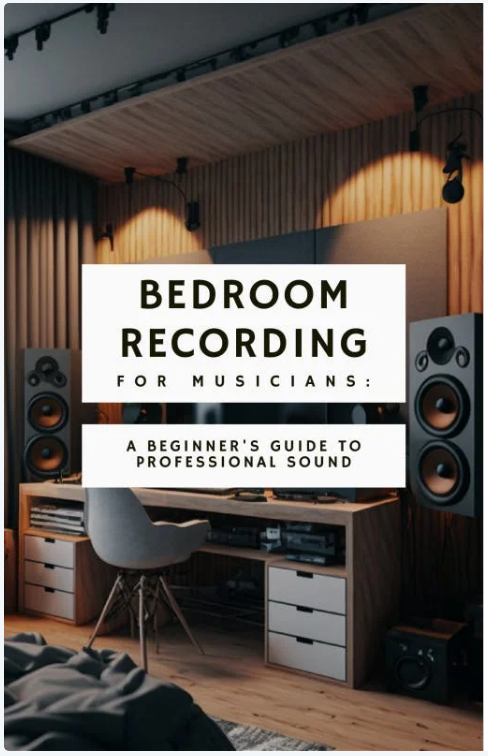You’ll navigate through essential techniques of Rap & Hip Hop mixing in this guide. Master how to avoid audio clipping, boost bass impact, and achieve peak vocal clarity. Learn to create unique vocal textures with pitch and formant manipulation and utilize delay effects for dynamic vocals. You’ll gain insight into managing compression in mixing, using EQ and effects creatively, and finally, mastering for a polished release. Covering these areas delivers a compelling mix that resonates with your audience. Stick around and you’ll uncover even more tips and tools to make your mixes slap harder than ever!
Key Takeaways
- Utilize audio clipping tools and limiters to manage sound levels and avoid distortion during mixing.
- Enhance bass impact by duplicating tracks, applying high pass filters and using subwoofers.
- Optimize vocal clarity through alignment of layered vocals, limiting reverb use and using pitch shifting and formant shifting tools.
- Apply delay effects and compression strategically to enhance vocal dynamics and control volume levels.
- Incorporate EQ and effects in mixing to shape tonal balance, cut clashing frequencies, and create rich textures.
Avoiding Audio Clipping in Mixing
When mixing rap and hip-hop tracks, it’s crucial to prevent audio clipping, a type of distortion that occurs when signal levels exceed device limits. Clipping is an innovation killer; it stifles the creativity in your mix and lowers your track’s quality.
Now, you’re wondering how to keep this distortion at bay. It’s all about control. First, make sure your vocals aren’t recorded too hot. If you’ve already recorded and clipping has occurred, don’t panic. Tools like RX Pro’s De-clip can help restore your audio to its pristine state.
Next, during mixing, keep an eye on your levels. Remember, each added element increases the overall volume. If you’re not careful, you’ll exceed the headroom, causing clipping. Don’t wait until you’ve clipped to lower a fader; by then, the distortion is already baked in. Lower your levels beforehand to maintain control.
Lastly, embrace the tools at your disposal. Innovative tech like clip indicators and limiters can help keep your levels in check. In your journey of music creation, avoiding clipping is a fundamental step. So, stay vigilant, and keep your mixes distortion-free.
Enhancing Bass Impact by Splitting Frequencies
Dialing up the bass in your rap and hip-hop tracks can transform them from good to great, and one effective technique for this is splitting frequencies. The process starts by duplicating your bass track. This gives you a duplicate bass line to play around with, providing more flexibility in your mix.
Next, you’ll need to play the duplicate bass line with a pure sine wave. This technique boosts the impact of your bass, making it more powerful and punchy. By using a pure sine wave, you’re allowing subwoofers to handle the bass more effectively, resulting in a clearer, stronger bass line.
On the original bass line, apply a high pass filter to cut off the lower frequencies. This prevents any potential muddiness in your mix.
It’s important to keep the original bass for texture and depth, while the sine wave takes care of the lower frequencies.
Optimizing Vocal Clarity and Timing
To optimize your rap or hip-hop track hits all the right notes, it’s important to maximize vocal clarity and timing. These elements are key in guaranteeing your track resonates with listeners, and they can make or break your mix.
Firstly, focus on aligning your layered vocals with the main vocal. This will keep your timing tight and avoid any distracting discrepancies. Software like VocALign can help you do this in a snap.
Next, be mindful of your reverb use. Too much can muddle your vocals, reducing clarity and making your lyrics hard to understand. Use reverb sparingly and consider investing in a plugin like Neoverb Pro, which offers an intelligent reverb for clean vocal ambience.
Creating Unique Vocal Textures With Pitch and Formant
Experimenting with pitch and formant adjustments can take your vocals from ordinary to extraordinary, adding a unique character that distinguishes your hip-hop mix. Don’t be afraid to push boundaries; it’s this pursuit of novel sounds that’ll set you apart.
Pitch shifting allows you to alter the perceived key of your vocals, while formant shifting manipulates the vocal tract length, changing the timbre without affecting pitch. These tools can be used subtly or dramatically, to create anything from a slight change in vocal character to a completely alien voice.
Consider using a pitch correction tool like Auto-Tune. While it’s often used to correct out-of-tune vocals, you can also use it creatively, to introduce deliberate pitch shifts. Similarly, software like Little AlterBoy can manipulate pitch and formant, providing a palette of unique vocal textures.
Keep in mind, these effects aren’t just for lead vocals. Try applying them to your backing vocals, harmonies, or ad-libs to add depth and complexity.
It’s important to experiment, but remember: it’s about enhancing the track, not overpowering it. Your goal is to create a unique, engaging sonic experience without losing the essence of the original performance.
Enhancing Vocal Dynamics With Delay Effects
Strategically introducing delay effects can unlock the potential of your vocal tracks, enhancing dynamic range and filling gaps in your hip-hop mix. These effects can add a sense of depth, making your vocals more vibrant and engaging. Try applying delay to specific words or phrases that you’re aiming to emphasize. This can add an unexpected twist, making your track more dynamic and interesting.
Remember, it’s all about balance. Delay effects shouldn’t overpower your mix, but rather complement it. Experiment with different delay times until you find the sweet spot that works for you. A tiny tweak can make a huge difference, so don’t be afraid to fine-tune things until you’re satisfied with the result.
Using delay effects isn’t just about enhancing vocal dynamics. It’s an opportunity to ignite your creativity and push boundaries. You’re not just a mixer, but an innovator, constantly exploring new ways to captivate your audience.
Utilizing Stutter Edits for Rhythmic Interest
While you’re tweaking delay effects, don’t forget to play around with stutter edits—an exhilarating tool that adds rhythmic interest and energy to your tracks.
Stutter edits, which involve chopping vocals into quick, repeated sections, can create a unique rhythmic texture that adds a fresh, innovative spin to your mix.
Think of stutter edits as the secret ingredient in your recipe for a captivating hip-hop track. It’s all about careful placement and judicious use. If you scatter it everywhere, your mix might become too chaotic. But when used sparingly, stutter edits can provide unexpected rhythmic twists that keep your listeners engaged.
You should experiment with different chop patterns to find the right rhythmic feel. This process is akin to sculpting—you’re taking raw audio and shaping it into something dynamic and compelling.
Creating Smooth Transitions With Track Flipping and Reversing
Exploring deeper into the realm of mixing, let’s uncover how flipping and reversing tracks can generate seamless, intriguing connections in your mix. This technique isn’t just for trailblazers – it’s a tool that can give your music a unique twist, surprising your listeners and keeping them engaged.
First, consider track flipping. This involves taking a segment of your track and playing it in reverse order. You’ll find that this can create a fascinating sonic texture, adding a sense of enigma to your mix. Experiment with different sections and see which parts sound best when flipped.
Next, let’s delve into track reversing. This technique mirrors your track horizontally, so the end becomes the start and vice versa. This can create fluid shifts, especially when you’re blending tracks together. It also adds an element of unpredictability, as the listener is taken on an unforeseen journey.
Don’t hesitate to get imaginative with these techniques. Sometimes, the most enthralling mixes are born from bold, innovative choices. So, play around with flipping and reversing your tracks – you might just discover your next distinctive sound.
Achieving Punchy Sound With Parallel Compression
Now that you’ve mastered the art of flipping and reversing tracks, let’s explore how parallel compression can help amplify your mix and produce a punchier sound. Parallel compression, also known as New York compression, is your secret weapon to get standout vocals and weighty beats that don’t lose their dynamic range.
Here’s how it works: You take a copy of your track, compress it heavily, and then blend this with the original, uncompressed signal. What you’re left with is a sound that’s both powerful and nuanced. It’s like having your cake and eating it too – the best of both worlds.
Start by duplicating your track. Next, apply heavy compression to the duplicate. Be bold here, don’t hold back. You’re aiming for a compressed signal that’s almost flat. Now, blend this back in with your original track. The trick is to adjust the balance until you’ve got just enough of the compressed signal to add punch, but not so much that it overpowers the original dynamics.


